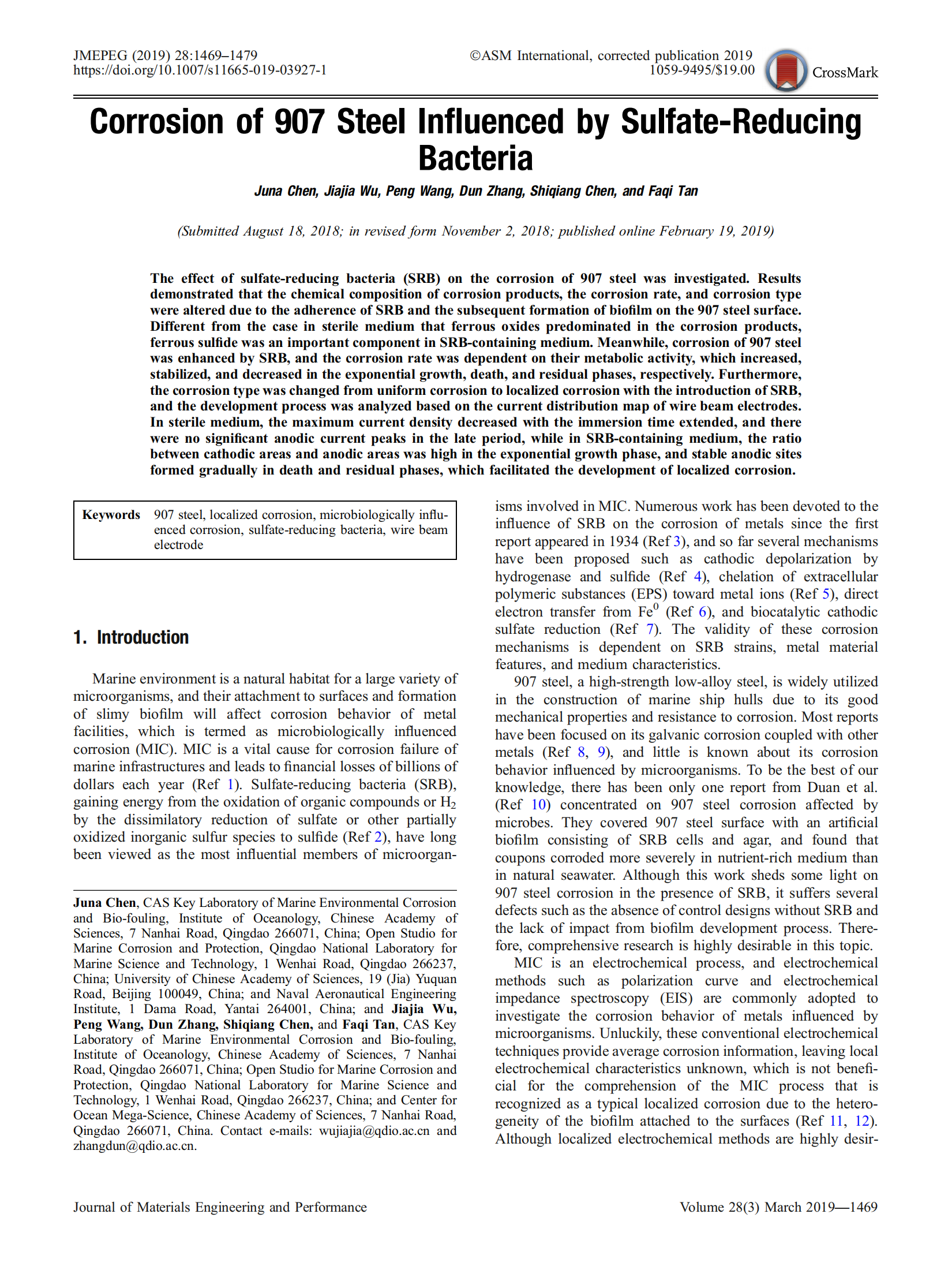The effect of sulfate-reducing bacteria (SRB) on the corrosion of 907 steel was investigated. Results demonstrated that the chemical composition of corrosion products, the corrosion rate, and corrosion type were altered due to the adherence of SRB and the subsequent formation of biofilm on the 907 steel surface. Different from the case in sterile medium that ferrous oxides predominated in the corrosion products, ferrous sulfide was an important component in SRB-containing medium. Meanwhile, corrosion of 907 steel was enhanced by SRB, and the corrosion rate was dependent on their metabolic activity, which increased, stabilized, and decreased in the exponential growth, death, and residual phases, respectively. Furthermore, the corrosion type was changed from uniform corrosion to localized corrosion with the introduction of SRB, and the development process was analyzed based on the current distribution map of wire beam electrodes. In sterile medium, the maximum current density decreased with the immersion time extended, and there were no significant anodic current peaks in the late period, while in SRB-containing medium, the ratio between cathodic areas and anodic areas was high in the exponential growth phase, and stable anodic sites formed gradually in death and residual phases, which facilitated the development of localized corrosion.
